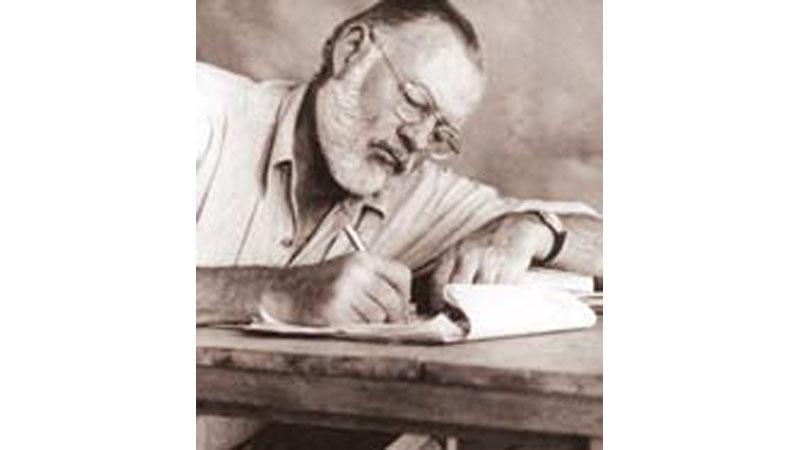
The above quote from Ernest Hemingway’s ‘A Movable Feast’ a memoir of his life in Paris in the 1920s, which was published posthumously, gives good insight about the legendary American writer’s ‘philosophy’ of how he approached his craft as a prose writer. The impact Hemingway made on the world literary scene echoes into the 21st century. His legend preceded him during his life time. Being a veteran of the Spanish Civil War, a big game hunter, deep sea fisherman, amateur boxer and bullfighting enthusiast, gave his literary works an appeal that went ‘beyond the text’ to carve into the imagination of the reader a voice that brought ‘truth of experience’ rather than fictional romanticising of a subject and woven with an engaging plot. 
Much of the literary legacy that Hemingway bequeathed the world created his larger than life persona so deeply in the collective psyche of the American people, that US novelist and poet Russell Banks has commented, “Men writing in America have to contend with the shade of Hemingway, and the longstanding tradition of manliness he tried to represent. They may reject that tradition but they can’t ignore it.”
His style is known as one that is sparse and terse and somewhat akin to ‘journalistic detail’ that reflects in some sense ‘reportage’. This can be attributed in one sense perhaps to the fact that Hemingway started his writing career as a cub reporter for the ‘Kansas City Star’. His style as a writer for the newspaper was said to be ‘thrifty and blunt’.
However, it is also said that Hemingway’s subsequent work for the ‘Toronto Star’ newspaper had him reporting on stories that had more to do with ‘human interest accounts’ saw him develop a style that showed greater skill of observation of the ‘human aspect’ in an event and thereby to gauge the depth of emotions that arise through an ‘experience’.
Although Hemingway is possibly more greatly celebrated for his novels as ‘The Sun Also Rises’ (1926), ‘A Farewell to Arms’ (1929), ‘For Whom the Bell Tolls’ (1940), and ‘The Old Man and the Sea’ (1952), he was also a masterful short fiction writer. While some of his short fictions, like the highly praised ‘The Snows of Kilimanjaro’, which was also made into a Hollywood movie with the Hollywood legend Gregory Peck playing the lead role, are known to be deep reflections of life and contemplative on his own life as a ‘man who lived it large’, Hemingway’s more shorter stories, such as ‘The Old Man at the Bridge’, ‘Hills Like White Elephants’, and ‘Cat in the Rain’ offer scenarios where the narrative is locked in a very small span of time passing between the characters, their interactions and actions, showing something of a ‘slice of life’ where emotions left unspoken or issues unresolved can be gauged through the situation that is narrated as fiction.
What ‘great plot’ can one find in the shortest of Hemingway’s short stories, is a question that may seem significant to a reader who desires an intricate ‘plot’ in a work of fiction. When considering a short story as ‘Hills Like White Elephants’ one may surmise that the larger notion of ‘plot’ is left to the reader if so desired to conjecture based on what is found in the narrative, since the story itself is about a moment of contention between a man and a woman where the matter of an abortion is being argued between them.
But looking at from another angle, how Hemingway may imagine his ‘deal’ with offering ‘a plot’ to his readers, in his short fiction, it may be said that in a work of short fiction such as the one titled, ‘A Very Short Story’, Hemingway presents an entire love affair between a young soldier and the nurse ‘Luz’ he falls in love with, and the sad end it reaches, in the span of one single page.
A summary of events presented with moments that mark the turning points of the characters’ emotions that alter their lives forever.
Hemingway’s craft in short story writing presents a range that can be appreciated for revealing issues through events that may seem mundane or not so dramatic to the more pressing and urgent.
A craft that offers glimpses of life that he viewed as honest and true and utterly possible and plausible to make fiction a reflection of life, and ‘truths’ he sought to capture in the art of fiction.
